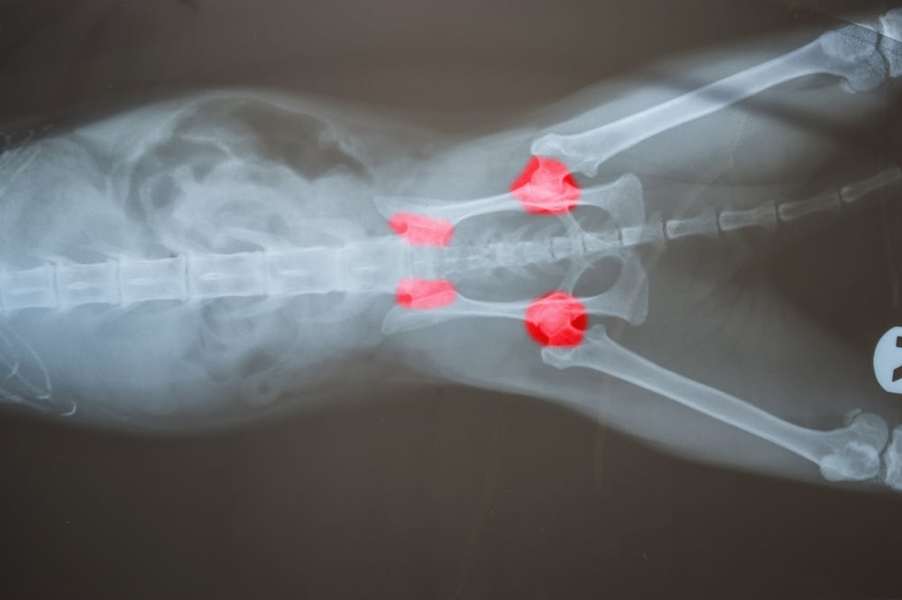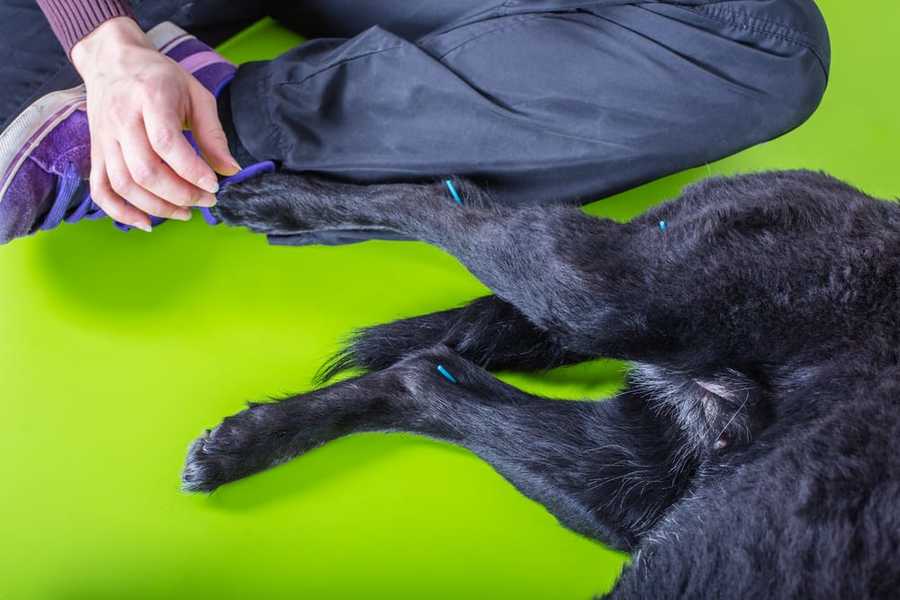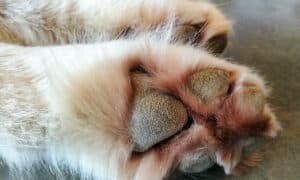“This post contains affiliate links, and I will be compensated if you make a purchase after clicking on my links.”

by Dr. Alison Streit
One of the most common diseases I see in aging pets is degenerative joint disease, otherwise known as osteoarthritis. I would say that 85% of my aging pets will develop some form of osteoarthritis as they become older. Patients come to me with difficulty standing, no longer jumping up on furniture, wanting to go on shorter walks, avoiding stairs, and restlessness. Many of the signs of arthritis in our pets go unnoticed, and is difficult for my clients to see that their pets are in pain. I cannot count the number of times that I have placed a pet on pain medication or supplements for their joints, and clients call me saying what a huge difference it has made with noticeable improvements. Today I would like to take a moment to educate my clients on degenerative joint disease and discuss all treatment options for our pets.
What is degenerative joint disease, also known as osteoarthritis?
Osteoarthritis, also known as degenerative joint disease (DJD), is defined as the progressive and permanent long-term deterioration of the cartilage surrounding the joints. Arthritis is the medical term for inflammation of the joints, while osteoarthritisis the term referring to a form of chronic joint inflammation caused by deterioration of joint cartilage. Older dogs are at the highest risk.

What are the common clinical signs?
Symptoms can vary with each pet and many times my clients do not even realize their pets are in pain.
- Decreased level of activity.
- Occasional lameness, and a stiff walk that worsens with exercise.
- No longer jumping up on furniture.
- Hesitant to climb up stairs.
- Difficulty and slowness rising from lying down.
- Becoming more recluse and isolated (especially with cats).
- Panting.
- Reluctance to go on walks or stop and turn back home in the middle of the walk.
- Restlessness.
What can I do to help my pet?
Pain Relief and Medications:
There are many analgesic medications (pain relievers) that can help our pets feel better. The most utilized pain relievers are non steroidal anti-inflammatories (NSAID’s) such as rimadyl, deramax, novox, or metacam. These medications help reduce swelling, stiffness, and joint pain. Other pain medications that are used for arthritis include tramadol, gabapentin, buprenorphine, and fentanyl. Speak with your veterinarian regarding the right pain relievers to use for your pet. It is very important to never give your pet any medications without consulting with your veterinarian first.
Natural Supplements (Nutraceuticals):
I am a big fan of supplements. Glucosamine chondroitin sulfate is a great all natural joint supplement that helps promote joint health and prevent degeneration. I recommend starting all large breed dogs on this supplement as early as puppyhood. These supplements come in many forms such as pills, tabs, oils, sprays, and treats. I sell them as chewable treats in my animal hospital. Adequan is another natural supplement that I use for treatment of DJD. This comes in an injectable form and the recommended dosing is 6 treatments in 3 weeks and then one time per month as maintenance therapy. Speak with your veterinarian regarding these supplements for your pet.
Cold Laser Therapy:
This is a newer treatment modality that has really taken off in veterinary medicine. I wrote a blog, MLS Laser Therapy, about this form of treatment and I am a huge advocate. It even works well on humans! This is a non invasive, natural form of treatment that is showing remarkable results. Cold laser therapy, also known as low level laser therapy (LLLT) uses wavelengths of light to interact with tissue and is thought to help accelerate the body’s healing process. The laser beam is moved over the skin so that the light energy (photons) penetrates the tissue where it interacts with various molecules (chromophores) and causes different biological effects which reduce pain related to inflammation.

Alternative Medicine:
Acupuncture and physical therapy are alternative treatments that can help control your pets pain and help well being. Under water treadmills and swimming are great forms of exercise and therapy for aching joints. Many vet hospitals and veterinarians perform acupuncture. Inquire with your veterinarian regarding referral centers that offer these type of treatments.
Maintain Your Pets at the Proper Weight:
I would say that one of the most important things you can do to help prevent DJD in your pets is making sure they are at a proper weight and not overweight or obese. This might be one of the biggest contributing factors to this disease and the biggest culprit for pain and discomfort. Our pets rely on us to keep them healthy. Make sure to keep them healthy and slim.
Many time pets cannot tell us when something hurts or if they are not comfortable. Degenerative joint disease is a slow progressive process that takes place over many years and pets adapt to the pain and discomfort over time. The majority of the time, they will not exhibit the typical limping or obvious signs of pain. I hope these suggestions will help you to recognize some subtle changes in your pet’s behavior that may indicate discomfort or pain. As veterinarians, there are many treatments and measures we can take to help your pet feel better and live a more conformable happier life into their golden years.
Hello everyone! My name is Dr. Alison Streit and I am Forever Freckled’s veterinarian. Being a veterinarian has been my dream job since I could barely speak. Over the past five years, I have dedicated my life to building, opening, and running an animal hospital in Fort Lauderdale, Florida, accomplishing a life long goal of mine. It has been an amazing journey turning my passion for animals into a career. I know pets are our family and nothing brings me more joy than to help pets and their parents with wellness and healthy living. In addition to being a veterinarian, I am a wife to my amazing husband Rob, and a mommy to my greatest accomplishment and the most unbelievable joy for me, my son Luke. Everyday I feel so lucky to have pursued my dreams to take care of animals, and become a wife and mother. I am so proud to have started Forever Freckled with my sisters and develop a platform to help people and pets on their life journeys.




















Great read! I heard just recently about the acupuncture appliance in dogs for pain relief. I believe that with proper development of the acupuncture for dogs we can help them even more.
Although there are many options to remedy their pain.. I still believe that we have to find an ultimate solution to this problem..